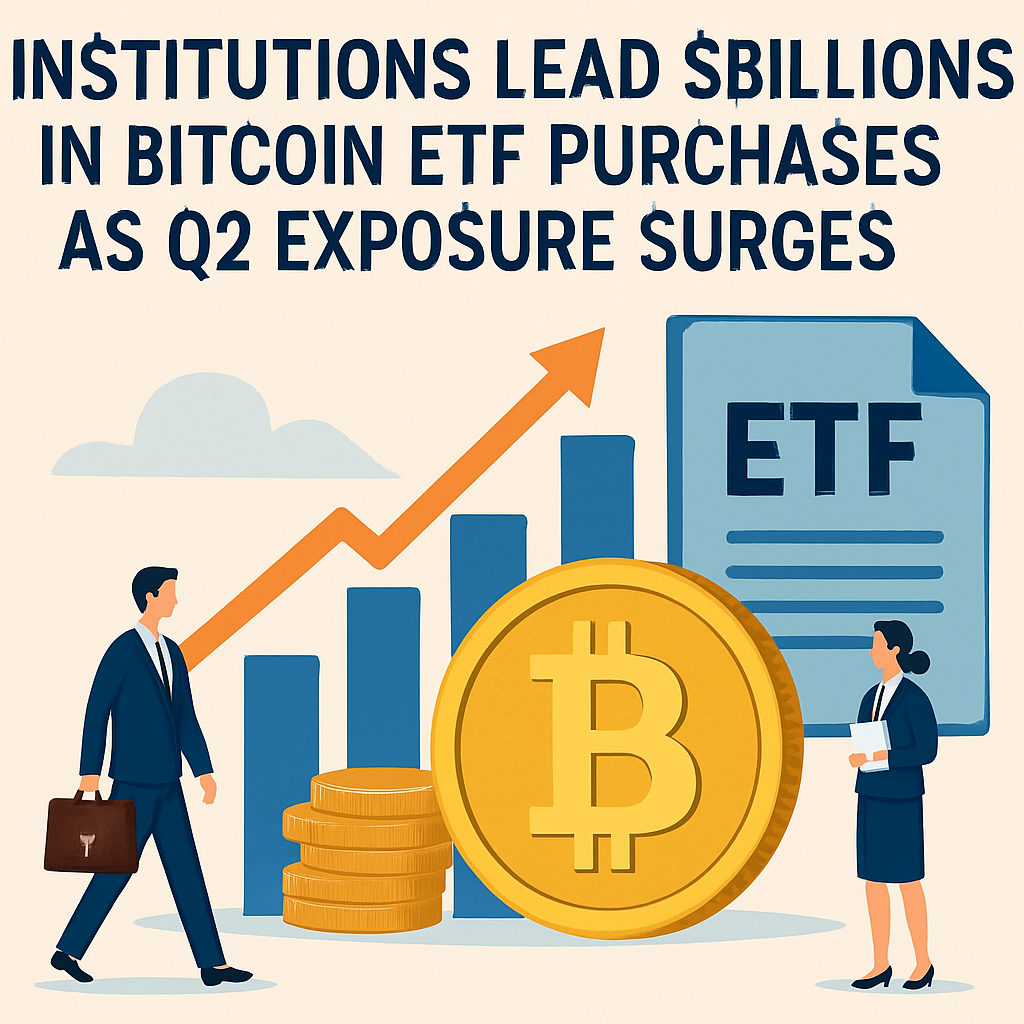Major institutional investors have significantly raised their indirect Bitcoin positions in the second quarter, leveraging both spot ETFs and equity stakes in crypto-adjacent firms, according to recent SEC filings. This trend underscores growing acceptance of digital assets within traditional investment portfolios.
Brevan Howard’s dedicated digital asset division nearly doubled its holding in BlackRock’s iShares Bitcoin Trust (IBIT), acquiring 37.9 million shares by the end of June, up from approximately 21.5 million at the close of Q1. This investment represented a stake valued at over $2.6 billion, making it one of the largest reported institutional holders of IBIT.
Goldman Sachs Asset Management also ramped up its ETF exposure, expanding its IBIT holdings to $3.3 billion alongside stakes in the iShares Ethereum Trust (ETHA) worth $489 million. While these positions may reflect client allocations rather than direct bets by the trading desk, they signal robust ETF demand among institutional clientele.
Beyond ETFs, traditional asset managers and endowments demonstrated interest in crypto-linked equities. The Harvard University endowment reported a $1.9 billion allocation to IBIT, while other investors, including Abu Dhabi’s Mubadala Investment Company, maintained sizable stakes in the fund.
U.S. banking institutions also showed renewed appetite for crypto exposure. Wells Fargo quadrupled its IBIT position to $160 million and held a $200,000 position in the Grayscale Bitcoin Fund (GBTC), whereas Cantor Fitzgerald increased combined holdings in IBIT and crypto-related stocks to over $250 million.
Trading firms have participated as well. Jane Street’s portfolio reportedly included 7.9 million shares of IBIT—worth $1.46 billion—positioning Bitcoin products alongside traditional securities such as Tesla and Amazon. This cross-asset approach underscores the evolving role of ETFs as a gateway for capital flows into digital assets.
Institutional embrace of spot Bitcoin ETFs reflects a broader shift toward regulated, transparent vehicles for crypto exposure, offering clients familiar custodial frameworks and brokerage integration. ETF structures also sidestep counterparty risk inherent in direct crypto custody.
Meanwhile, indirect exposure through equities remains a complementary channel. Investors can gain Bitcoin-linked returns via companies with on-chain holdings, such as MicroStrategy, whose balance sheet accumulation has drawn significant attention. This dual strategy of ETFs and equities diversifies access points to the asset class.
The Q2 data highlights a maturation of institutional infrastructure supporting digital assets, from custody solutions to advisory frameworks. As more asset managers integrate Bitcoin ETFs into model portfolios, the sector is poised for further expansion in AUM and product innovation.
Looking ahead, SEC approvals of new crypto ETFs and potential spot Ethereum products may broaden institutional pipelines, while ongoing regulatory developments will shape the next phase of institutional adoption and market growth.

Comments (0)